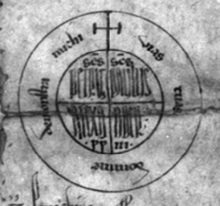
In geometry, the circumference is the perimeter of a circle or ellipse. The circumference is the arc length of the circle, as if it were opened up and straightened out to a line segment. More generally, the perimeter is the curve length around any closed figure. Circumference may also refer to the circle itself, that is, the locus corresponding to the edge of a disk. The circumference of a sphere is the circumference, or length, of any one of its great circles.

A seal is a device for making an impression in wax, clay, paper, or some other medium, including an embossment on paper, and is also the impression thus made. The original purpose was to authenticate a document, or to prevent interference with a package or envelope by applying a seal which had to be broken to open the container.

A papal bull is a type of public decree, letters patent, or charter issued by a pope of the Catholic Church. It is named after the leaden seal (bulla) traditionally appended to authenticate it.

Long Meg and Her Daughters is a Neolithic stone circle situated north-east of Penrith near Little Salkeld in Cumbria, North West England. One of around 1,300 stone circles in the British Isles and Brittany, it was constructed as a part of a megalithic tradition that emerged during Neolithic, and continued into the Early Bronze Age. The stone circle is the second widest in England, behind Avebury in Wiltshire. It consists of 59 stones set in an east/west oval configuration measuring 380 ft (120 m) on its long axis. There may originally have been as many as 70 stones. Long Meg herself is a 12 ft (3.7 m) high monolith of red sandstone 80 ft (24 m) to the southwest of the circle. The stone is marked with examples of megalithic art including a cup and ring mark, a spiral, and rings of concentric circles. This art mirrors examples from Neolithic Ireland, including the contemporary Newgrange.

The Sator Square is a two-dimensional acrostic class of word square containing a five-word Latin palindrome. The earliest squares were found at Roman-era sites, all in ROTAS-form, with the earliest discovery at Pompeii. The earliest square with Christian-associated imagery dates from the sixth century. By the Middle Ages, Sator squares had been found across Europe, Asia Minor, and North Africa. In 2022, the Encyclopedia Britannica called it "the most familiar lettered square in the Western world".

The Ophite Diagrams are ritual and esoteric diagrams used by the Ophite sect of Gnosticism, who revered the serpent from the Garden of Eden as a symbol of wisdom, which the malevolent Demiurge tried to hide from Adam and Eve.
The Roman Rota, formally the Apostolic Tribunal of the Roman Rota, and anciently the Apostolic Court of Audience, is the highest appellate tribunal of the Catholic Church, with respect to both Latin Church members and the Eastern Catholic members and is the highest ecclesiastical court constituted by the Holy See related to judicial trials conducted in the Catholic Church. An appeal may be had to the pope himself, who is the supreme ecclesiastical judge. The Catholic Church has a complete legal system, which is the oldest in the West still in use. The court is named Rota (wheel) because the judges, called auditors, originally met in a round room to hear cases. The Rota was established in the 13th century.
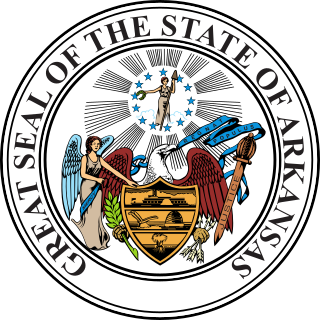
The Great Seal of Arkansas is used to authenticate certain documents issued by the Government of Arkansas. The phrase is used both for the physical seal itself, which is kept by the governor, and more generally for the design impressed upon it. The seal was modified to its present form on May 23, 1907.

The Great Seal of Missouri is used to authenticate certain documents issued by the Government of Missouri. The phrase is used both for the physical seal itself, which is kept by the secretary of state, and more generally for the design impressed upon it. The Great Seal was designed by Robert Wells of Jefferson City.
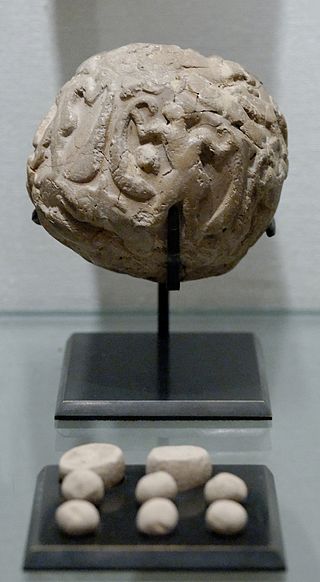
A bulla is an inscribed clay or soft metal or bitumen or wax token used in commercial and legal documentation as a form of authentication and for tamper-proofing whatever is attached to it.

The coat of arms of Samoa takes its inspiration from the United Nations, as New Zealand administered Western Samoa first as a League of Nations Mandate and then as a United Nations trusteeship until the country received its independence on 1 January 1962, as Western Samoa. Samoa was the first Polynesian nation to reestablish independence in the 20th century. The background is cross-hatched with a grid like the United Nations arms, most of the other elements are duplicated on the national flag.
A notarius is a public secretary who is appointed by competent authority to draw up official or authentic documents. In the Roman Catholic Church there have been apostolic notaries and even episcopal notaries. Documents drawn up by notarii are issued chiefly from the official administrative offices, the chanceries; secondly, from tribunals; lastly, others are drawn up at the request of individuals to authenticate their contracts or other acts.
Regarding the canon law of the Catholic Church, canonists provide and obey rules for the interpretation and acceptation of words, in order that legislation is correctly understood and the extent of its obligation is determined.

In geometry, a Steiner chain is a set of n circles, all of which are tangent to two given non-intersecting circles, where n is finite and each circle in the chain is tangent to the previous and next circles in the chain. In the usual closed Steiner chains, the first and last circles are also tangent to each other; by contrast, in open Steiner chains, they need not be. The given circles α and β do not intersect, but otherwise are unconstrained; the smaller circle may lie completely inside or outside of the larger circle. In these cases, the centers of Steiner-chain circles lie on an ellipse or a hyperbola, respectively.

In geometry, two or more objects are said to be concentric when they share the same center. Any pair of objects with well-defined centers can be concentric, including circles, spheres, regular polygons, regular polyhedra, parallelograms, cones, conic sections, and quadrics.
In the canon law of the Catholic Church, a notary is a person appointed by competent authority to draw up official or authentic documents. These documents are issued chiefly from the official administrative bureaux, the chanceries; secondly, from tribunals; lastly, others are drawn up at the request of individuals to authenticate their contracts or other acts. The public officials appointed to draw up these three classes of papers have been usually called notaries.
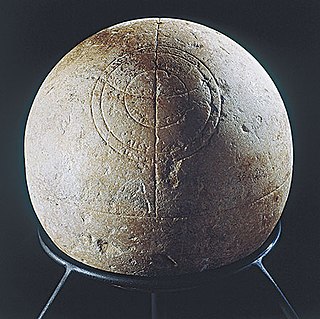
The Globe of Matelica is an ancient Roman sundial sculpted on a marble ball. The artifact was found during the 1985 reconstruction of the medieval Palazzo Pretorio, presently Museo Civico Archeologico, of Matelica in the Marches, region of Italy.
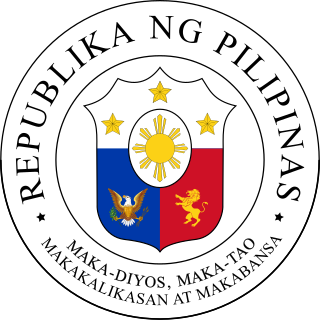
The Great Seal of the Philippines is used to authenticate official documents of the government of the Philippines.

The seal of the House of Representatives of the Philippines is the seal officially adopted by the House of Representatives of the Philippines to authenticate certain official documents. The seal is of the Office of the House of Representatives and not to any members of the House including the speaker of the House.
